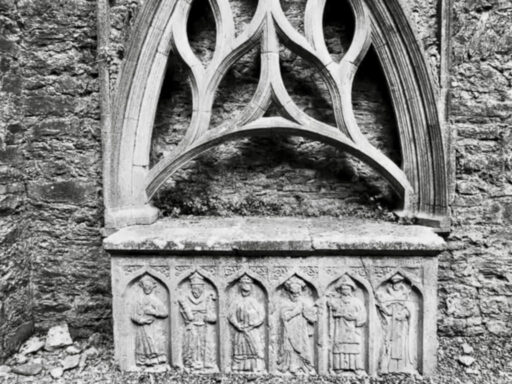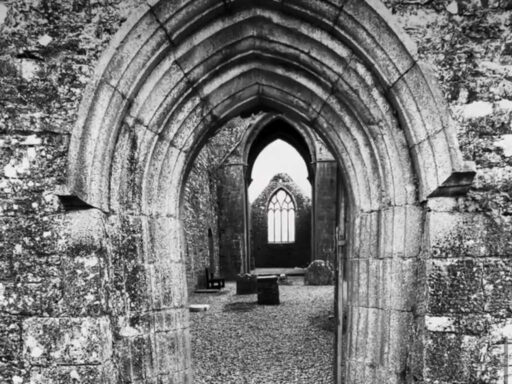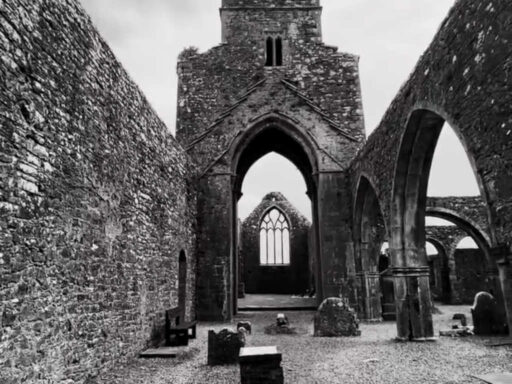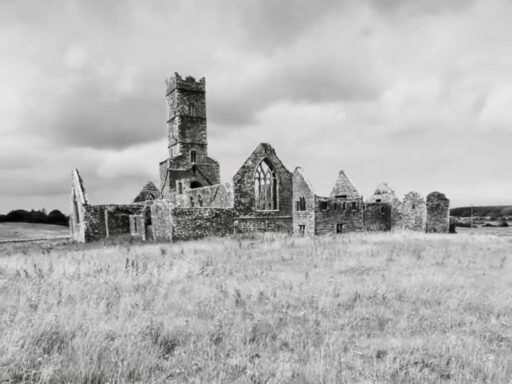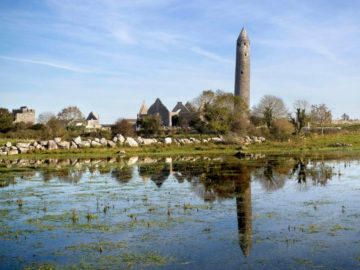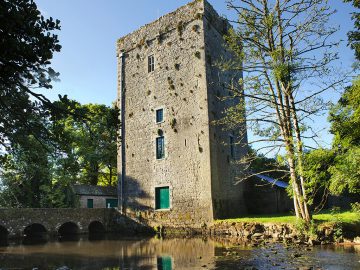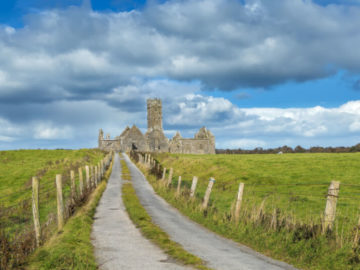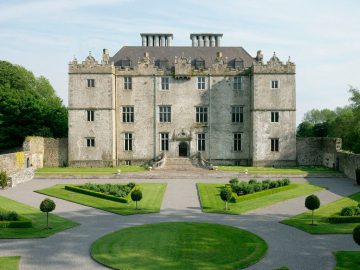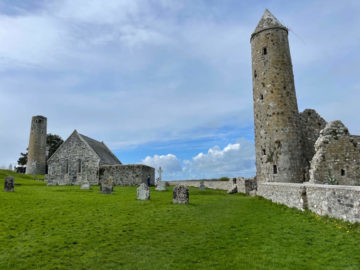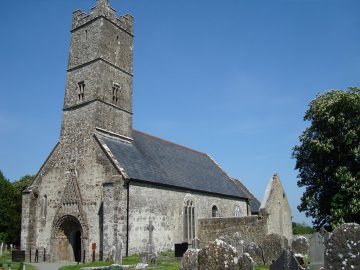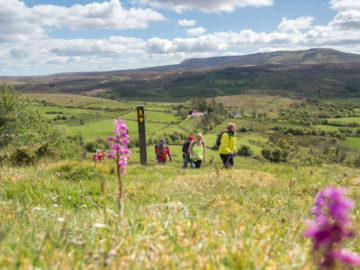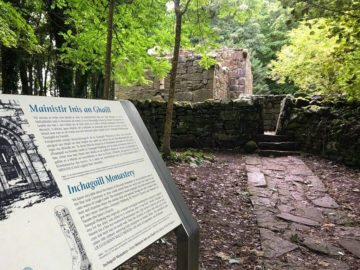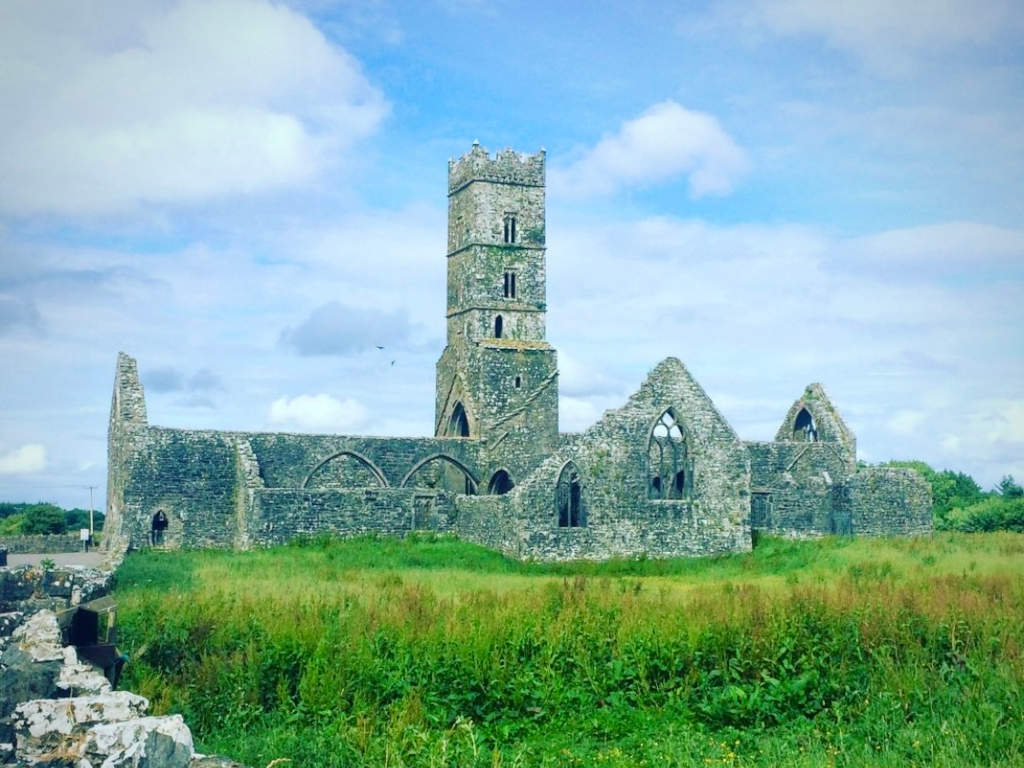
Kilconnell Franciscan Friary
Killconnell Abbey: Medieval Franciscan Monastery
Kilconnell Friary, 13km (15 mins drive) from Ballinasloe, Galway, holds a rich tapestry of history woven into its ancient stones. Its origins trace back to the 6th century, where a religious settlement founded by St. Conall lent its name to the site, known in Irish as Cil Chonaill, meaning Conall’s Church. While historical records debate its exact establishment date, the prevailing narrative suggests its inception around 1414, with support from William O’Kelly, Lord of Uí Maine, a prominent figure in Connacht’s storied past.
Unlike many monastic institutions shuttered during the Dissolution of the Monasteries, Kilconnell endured. Even under English occupation in 1596, the friary continued its religious mission. Later, it witnessed the interment of notable figures like Matthias Barnewall, 8th Baron Trimlestown, under the watchful gaze of Oliver Cromwell in 1657.
Yet, it’s the intricate niche tombs adorning its walls that truly distinguish Kilconnell. These exquisite monuments, scattered throughout the nave and choir, elevate the friary to a realm of unparalleled splendour. Despite the ravages of time, Kilconnell remains a testament to the enduring legacy of Ireland’s religious heritage—a must-see destination for those enamored with history’s silent whispers and architectural marvels.
Notable Friary features
Foundation and Reconstruction: Founded in 1353 by William O’Kelly, Lord of Ui Maine, possibly on the site of an earlier 6th-century monastery established by St. Conall. Reconstructed in 1414.
Nave and Chancel Church: Features a 37.5-meter length 15th-century nave and chancel church, indicating significant architectural scale and historical importance.
Central Tower: A three-storey tower centrally placed within the church, added in the latter part of the 15th century, showcasing medieval architectural techniques.
Cloister: Remains of the cloister are present, with only the east and south arcading remaining. The cloister provides insight into the layout and function of the friary complex.
Additions and Extensions: Various additions over centuries including the south aisle, south transept, sacristy, and the later O’Donnellan chapel, reflecting the evolving architectural styles and functional needs of the friary.
Elaborate Stone Carvings: Abundant elaborate stone carvings throughout the friary, showcasing the craftsmanship and artistic expression of the period.
Tomb Structures: Several tombs within the friary, including a beautiful canopied late 15th-century tomb with weepers, the O’Kelly sept tomb on the south wall of the chancel, and the O’Daly tomb, providing insights into the socio-economic status and cultural practices of the time.
Piscinas: Two gorgeous Piscinas found within the friary, highlighting the importance of religious rituals and sacraments in medieval society.
Stonemason’s Marks: Stones bearing stonemason’s marks, indicating the identity of individual craftsmen and their contributions to the construction and decoration of the friary.
Ancient Field System and Holy Wells: Surrounding the monastery is an ancient field system, and there are believed to be three holy wells in close proximity, underscoring the religious significance and integration of the friary within the surrounding landscape and community.
Kilconnell Friary: what to expect
Location and directions
Travel west from Ballinasloe on the R348 for 13 Kilometres, then take a right turn Brodericks Pub, taking the narrow road up to the Friary.
Kilconnell Franciscan Friary FAQs
Who founded Kilconnell Franciscan Friary and when?
What are the notable features of Kilconnell Friary?
What major historical events did Kilconnell Friary endure?
What hotels are near Kilconnell Franciscan Friary?
- Shearwater Hotel
- Gullane’s Hotel
- Moycarn Lodge & Marina
- Rouse B&B
Are there places to eat near Kilconnell Franciscan Abbey?
- Venezia Italian Ballinasloe
- Brewery Lane
- Kawa Asian Street Food & Bar – Ballinasloe
- Costa Coffee
- The Bread Basket
- Kariba’s Restaurant & Coffee House
